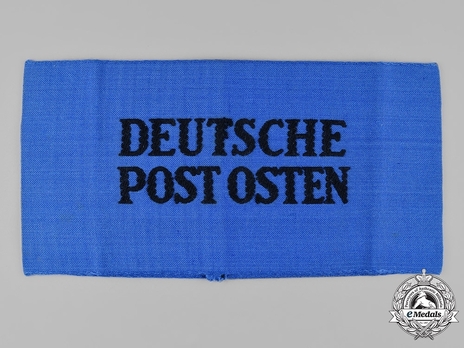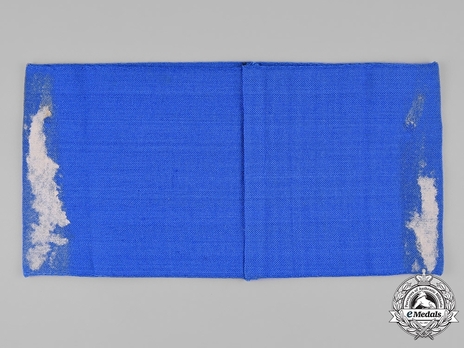Reichspost Eastern Postal Service Armband
SKU: 71.GOR.03.02.04.002
Estimated market value:


Estimated market value:
Attributes
History
The German Reichspost (national postal service) was founded as a result of the transition from empire to Weimar Republic after the First World War. During the time of the empire, several German states had had their own postal service, but during the time of the Weimar Republic, the postal service was transformed into a unified, national, government-run operation. As such, during the time of the Third Reich, the postal service conformed with the NSDAP ideology and was used to further it. The Reichspost incorporated the postal services of annexed territories (i.e. Austria, Sudetenland) as well as conquered territories (i.e. Poland).
The Postschutz (postal service protection) was a paramilitary organisation tasked with protecting postal buildings and property. It was established in March of 1933. During the war, postal protection personnel stationed outside of the German borders in occupied territories were referred to as Deutsche Dienstpost.
Just like the Reichspost, the Postschutz used orange piping and orange cloth underlay for their garments and insignia. Unlike the Reichspost, however, the Postschutz uniform colour was field-grey. This was changed to brown in 1941.
Members of the Deutsche Dienstpost used the same uniforms and insignia as the Postschutz, but with green piping and cloth underlay.
In March of 1942, the Postschutz came under control of the Allgemeine SS and shortly after under control of the Waffen-SS. It was henceforth known as SS-Postschutz.
Feldpost (field mail) is the term for all mail sent to and from soldiers, either private letters for individuals or orders sent from one unit or office to another. Feldpost was entirely controlled by the German Wehrmacht (armed forces) and not a part of the regular Reichspost.
The armband worn by postal personnel in the occupied Eastern territories is blue with the black Latin inscription “Deutsche Post Osten” (German Postal Service East) in two lines. It was worn on the left sleeve.


Comments
Sign in to comment and reply.


Scroll Top